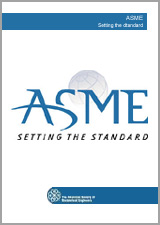We need your consent to use the individual data so that you can see information about your interests, among other things. Click "OK" to give your consent.

The information about the standard:
Designation standards: ASME B4.2:1978(R2020)
Publication date standards: 1990
SKU: NS-1007271
The number of pages: 72
Approximate weight : 216 g (0.48 lbs)
Country: American technical standard
Category: Technical standards ASME
Annotation of standard text ASME B4.2:1978(R2020) :
This standards is an ASME standard.
This standard describes the ISO system of limits and fits for mating parts as it is approved for general engineering usage in the United States of America. It establishes: (1) the designation symbols used to define specific dimensional limits on drawings, material stock, related tools, gages, etc., (2) the preferred basic sizes (first and second choices), (3) the preferred tolerance zones (first, second and third choices), (4) the preferred limits and fits for sizes (first choice only) up to and including 500 millimeters, and (5) definitions of related terms. Tolerance zones for basic sizes in the range from 500 to 3150 mm are specified in Appendix B. The general terms "hole" and "shaft" can also be taken as referring to the space containing or contained by two parallel faces of any part, such as the width of a slot, the thickness of a key, etc.
Desc: B4.2
Reaffirmed: 2020
We recommend:
Technical standards updating
Do you want to make sure you use only the valid technical standards?
We can offer you a solution which will provide you a monthly overview concerning the updating of standards which you use.
Would you like to know more? Look at this page.



 Cookies
Cookies
